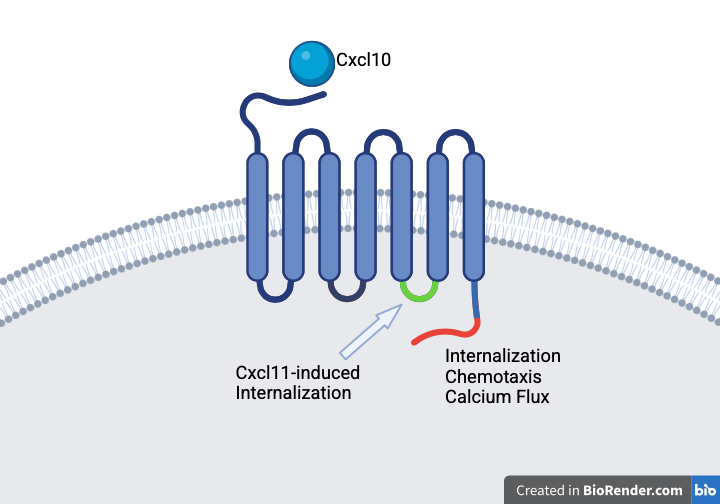Week 1 – Description of the Cxcr3 Receptor
Hello everyone,
For the topic of this week’s blog post, please view the attached figure of the structure of Cxcr3 (Fig. 1). As described in the previous blog post, Cxcr3 is a seven transmembrane domain G protein-coupled receptor that is used to signal chemotaxis in lymphocytes (as a part of an immune system response). Additionally, the third intracellular loop of Cxcr3 has been shown to also have a role in immune cell response, specifically with the binding of the other ligand Cxcl11.
In my previous internship, the mutant gene I designed encoded for Cxcr3 with a deletion right above the “Chemotaxis” region at the intracellular end of the receptor. This means that my project is testing a shortened Cxcr3 with the binding site and intracellular loops without the highlighted chain at the end. By studying this mutant receptor, we might be able to understand if the carboxyl-terminal domain of CXCR3 is required for breast cancer cell migration.
This week I completed a Designated Campus Colleague (DCC) form to start hands-on work and continued to research work done on the Cxcr3 receptor. I look forward to keeping these weekly updates when I start lab work. Feel free to ask any questions in the comments.

1Figure 1 Created with BioRender.com

Comments:
All viewpoints are welcome but profane, threatening, disrespectful, or harassing comments will not be tolerated and are subject to moderation up to, and including, full deletion.